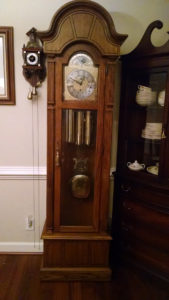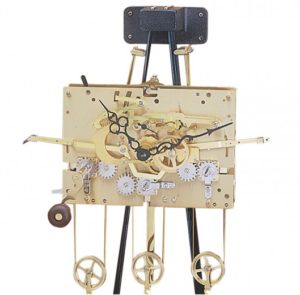When you think of iconic German clockmaking, images of elaborate cuckoo clocks nestled deep within the Black Forest often come to mind. But behind the charming carved facades and the cheerful cuckoo calls, there’s an unsung hero keeping everything running smoothly: the Regula movement.
While not a household name like Junghans or Kienzle, the Regula Clock Company has quietly become one of the most important players in preserving the mechanical tradition of Black Forest timepieces.
🌲 A Company Rooted in Tradition
Regula, the movement brand, was established around the 1950s in Germany’s Black Forest region. It was created by Hubert Herr GmbH, a well-known traditional clockmaking family business based in Triberg, Germany.
To be very precise:
- Hubert Herr had been making cuckoo clocks since the late 19th century (the company started in 1866), but Regula as a specialized movement manufacturer came about post-World War II, when the need for standardized, mass-produced cuckoo clock mechanisms grew.
- The 1950s is when Regula started producing the movements under the Regula brand name that would soon become the industry standard for mechanical cuckoo clocks.
So in short:
✅ Regula was founded in the 1950s by Hubert Herr GmbH.
⚙️ What Made Regula Movements So Special?
Regula movements earned a reputation for being highly reliable, mechanically simple, and long-lasting. They powered everything from the simplest traditional one-day cuckoo clocks to ornate eight-day models with dancers, music boxes, animated animals, and more.
Each Regula movement was stamped with:
- REGULA
- Made in Germany
- A model number (such as 25, 34, 72)
The different model numbers corresponded to the specific type of movement—whether a simple cuckoo or a musical model with multi-shaft drive systems. Thanks to their widespread use, replacement parts for Regula movements became easy to find, making repair and restoration much simpler than with many other clock types.
Even today, most authentic mechanical cuckoo clocks—whether vintage or brand new—likely house a Regula movement inside.
🧭 Survival Through Changing Times
The 20th century saw major upheavals in the clock industry. The rise of quartz technology in the 1970s and 80s nearly wiped out mechanical clock production in many parts of the world. Yet, Regula remained strong by focusing on its niche—mechanical cuckoo clocks—and maintaining its ties to the Black Forest’s traditional artisans. Today, Regula movements continue to be manufactured and remain the industry standard for German cuckoo clocks worldwide.
🔖 The Regula Legacy
Although Regula is not often featured on a clock’s dial, its work is vital to the life of the clock itself. Collectors and enthusiasts recognize a Regula movement as a mark of authenticity, quality, and mechanical artistry.
Without Regula, the rich tradition of Black Forest clockmaking would likely have faded much sooner. Their commitment to mechanical excellence ensured that generations of cuckoo clocks—from rustic hunting lodge designs to elaborate chalet-style masterpieces—continue to delight people around the world.
The next time you hear the cheerful sound of a cuckoo call, remember that behind that charming voice is the heartbeat of a Regula movement—faithfully ticking away, just as it has for decades.
✨ Final Thoughts
In a fast-moving world where convenience often overshadows craftsmanship, Regula remains a symbol of patience, precision, and heritage. It’s a reminder that some things—like the simple joy of a cuckoo clock—are worth preserving.
Though Regula may not be the most visible name in horology, its contributions ensure that the timeless beauty of mechanical cuckoo clocks lives on for generations to come.



